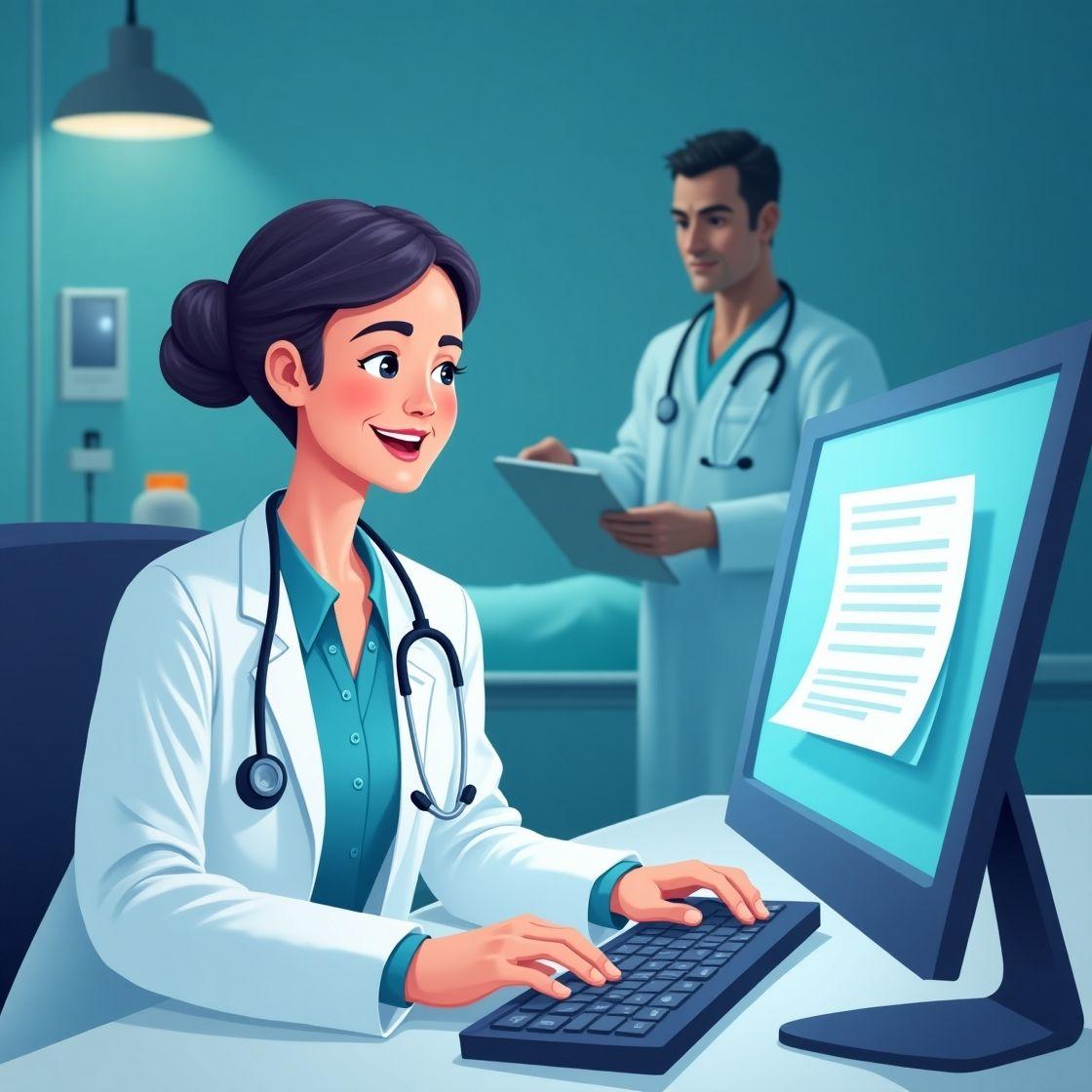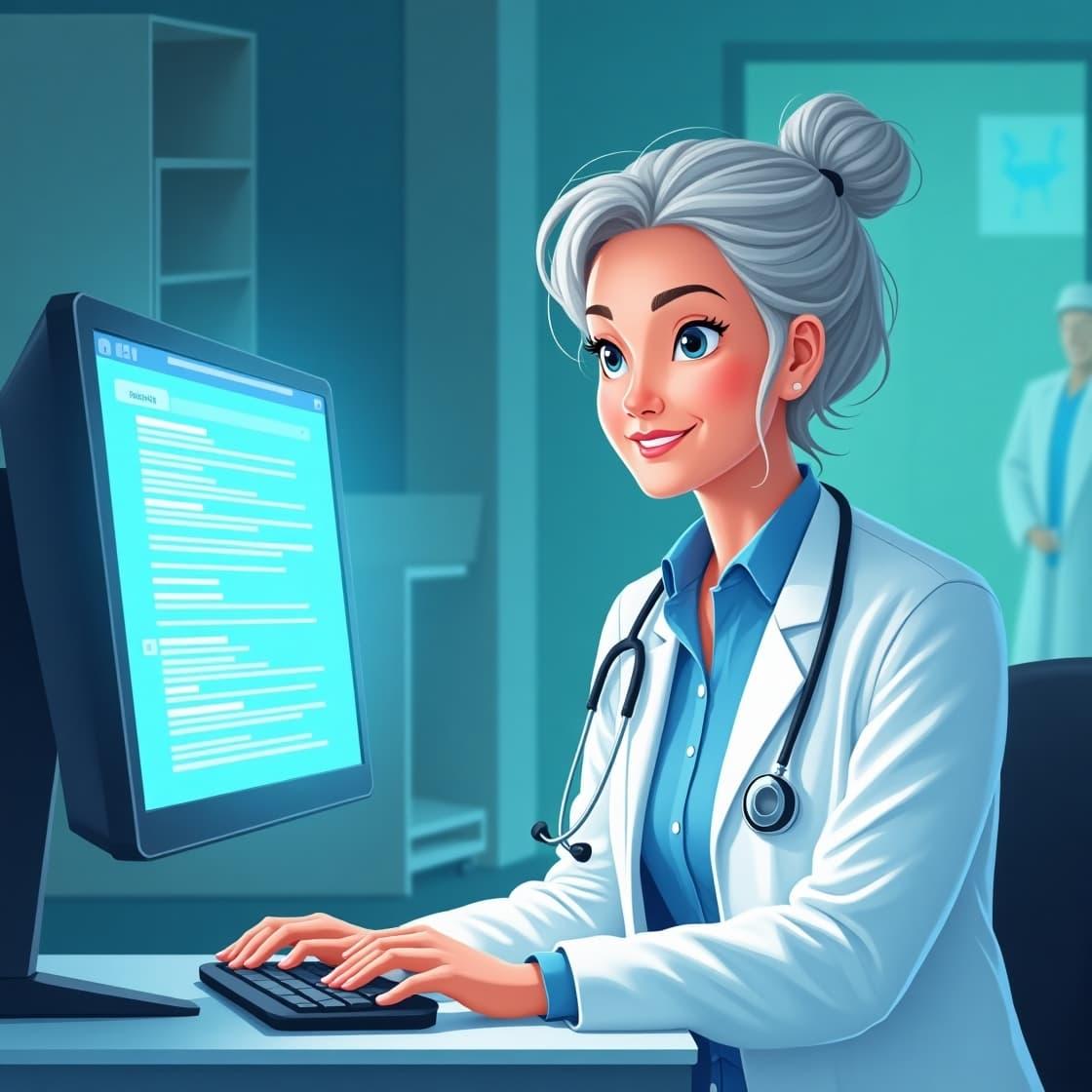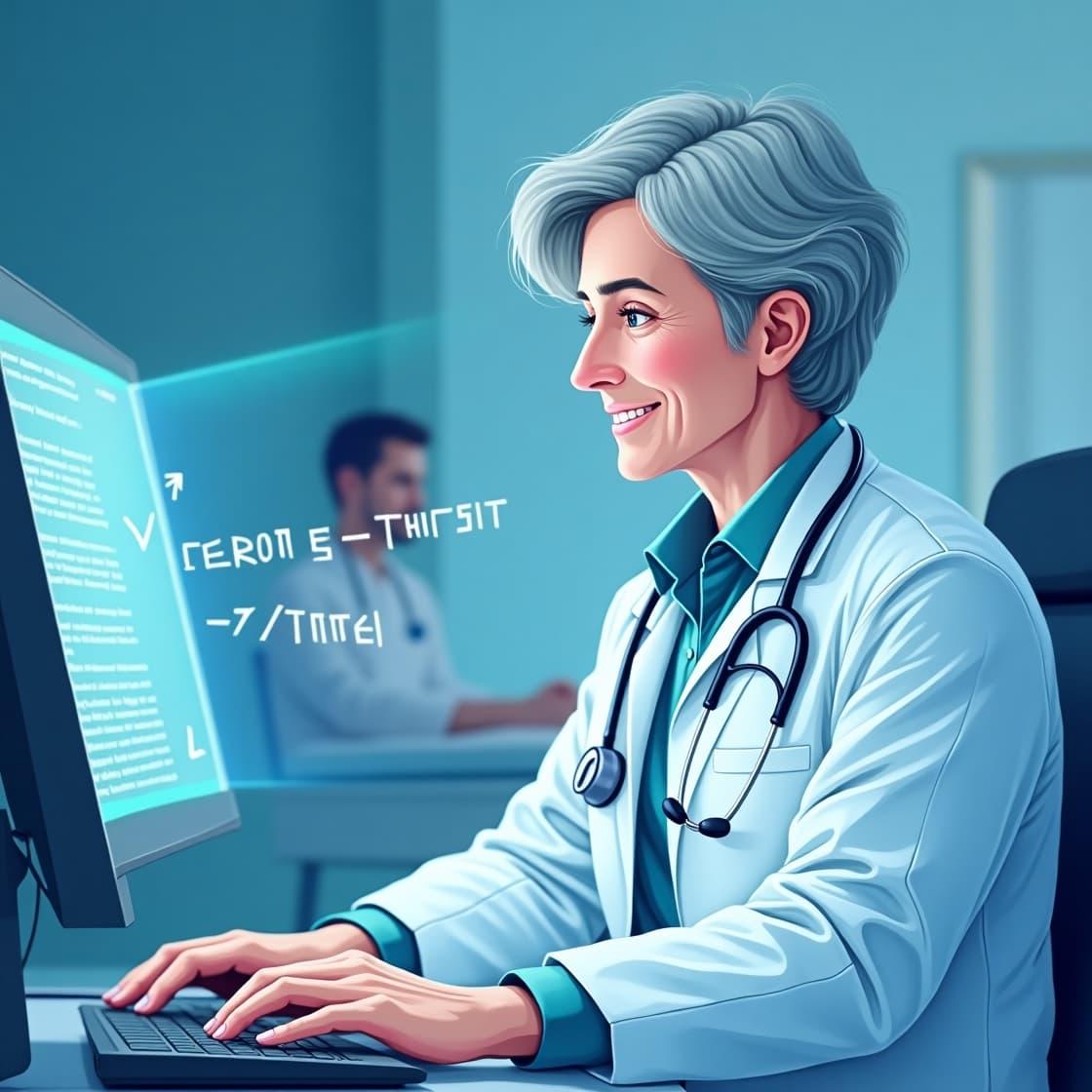Speech-to-Text Medical Solutions | AI-Powered Dictation for Healthcare Efficiency
Ai Clinical Scribe
March 25, 2025

In the ever-evolving world of healthcare, efficiency is everything! From diagnosing illnesses to managing patient care, medical professionals juggle countless responsibilities daily. One of the most time-consuming tasks? Documentation! This is where speech-to-text medical solutions step in, making note-taking faster and more seamless.
These cutting-edge tools use AI medical dictation to convert spoken words into written text, streamlining documentation and allowing healthcare providers to focus on what truly matters: patient care.
What is Speech-to-Text Medical Solutions?

Speech-to-text solutions are based on clinical speech recognition, which translates a provider's speech into automated medical notes. Doctors, nurses, and other healthcare professionals don't have to type or write medical documentation. They can just speak, and the software will create written records in real-time.
These tools use advanced AI and machine-learning models to ensure accurate, context-aware transcriptions. They are often integrated with electronic medical records (EHRs), which makes documentation easier. Providers can dictate notes without having to spend hours on paper, improving workflow and time management.
Voice-to-text technology has existed for many years. However, the solutions available today are more sophisticated. They can adapt to accents and recognize medical jargon. AI-driven learning allows them to improve their accuracy with time.
What is the purpose of speech-to-text medical solutions?
Medical speech-to-text solutions are used primarily in clinical settings, where documentation is an integral part of workflow. These tools are helpful for creating records in a hospital, private practice, or telemedicine session.
1. Real-Time Transcription
One of the most common uses is real-time dictation. The software allows physicians to verbally dictate notes during patient consultations, allowing doctors to interact more naturally with their patients since they are no longer glued to screens.
2. Integrating Electronic Health Records (EHRs)
Modern healthcare voice transcription software integrates with EHR systems to ensure that patient notes are saved in the correct patient files. It reduces administrative tasks and improves access for the whole medical team.
3. Documentation Post-Consultation
Speech-to-text software allows professionals to dictate after a consultation if they prefer. Doctors can dictate detailed notes after a consultation to ensure comprehensive and accurate records.
4. Use of Mobile and Remote Devices
Speech-to-text is becoming more critical with the growth of telehealth. Many providers use these tools on their mobile devices to ensure that documents can be handled quickly, even when they're on the move.
Limitations in Speech-to-Text Medical Solutions

Even though the technology is impressive, it has its limitations. These solutions are not without their challenges.
1. Accuracy Issues
Although AI-powered dictation tools have made great strides, they are still not 100% accurate. Accents, background sounds, and variations of speech can lead to transcription errors. The time required to correct these mistakes could negate the benefits of time savings.
2. Lack of context awareness
Speech-to-text software is not like an AI clinical scribe that can analyze conversations to determine context. Instead, it focuses primarily on verbatim transcription. They may have difficulty distinguishing between medical terms that sound similar or correctly interpreting complex medical dialogues.
3. Limited Customization
Some medical professionals need the ability to customize their speech-to-text tools. They may understand general medical terms, but they may not be able to grasp specialty-specific terminology or provider-specific preferences.
4. Privacy and Security Issues
The medical documentation contains highly sensitive information about patients. Speech-to-text programs that are not adequately secured could compromise patient confidentiality. Security is a concern because not all solutions provide end-to-end encrypted communication or HIPAA compliance.
AI Clinical Scribe and Speech-to-Text Medical Solutions

Where does a clinical scribe come into the picture? Speech-to-text medical solutions can be helpful. AI scribes, however, take transcription to an entirely new level. They go beyond simply transcription; instead, they actively understand, structure, and enhance medical documentation.
1. Contextual Understanding and Enhanced Accuracy
They don't just transcribe--they analyze doctor-patient interactions, ensuring that medical notes are strong>structured, meaningful, and clinically relevant./strong> They do more than just transcribe; they analyze doctor-patient interaction to ensure that medical notes are -structured, meaningful, and clinically relevant.
2. Fully Automated Workflow
Speech-to-text systems may require providers to edit and format notes manually. AI Scribes take care of everything from recognizing details to formatting documents into EHR-friendly formats. This means that doctors can spend more time with their patients and less time on administrative tasks.
3. Reduced Physician Burnout
Documentation fatigue is a serious problem in the medical industry. AI clinical scribes significantly reduce the workload by streamlining documentation processes. They require little human interaction, allowing physicians to concentrate on patient care instead of paperwork.
4. Smarter AI Integration
AI-powered documentation software can continually learn and improve, making it more reliable over time. It can also adapt to the provider's preferred language, speech patterns, and documentation style, offering a truly customized experience.
5. Long-term Cost Effectiveness
AI clinical scribes are initially more expensive than standard speech-to-text tools. However, over time, they will save you money because you won't need to hire medical scribes or spend extra hours documenting.
Final Verdict - Which is better?
Speech-to-text and AI clinical Scribes both have their place in the healthcare industry, but AI clinical Scribes are the better choice for those providers who want efficiency and accuracy as well as reduced workload. This is a game changer for healthcare professionals looking to improve documentation and patient interaction.
The Future of Medical Documentation
AI is the future of medical documentation. The future of medical documentation is undoubtedly AI-driven.
Are you ready to upgrade your organization's documentation process? AI clinical transcriptionists will revolutionize healthcare by saving time, reducing patient stress, and improving care.

